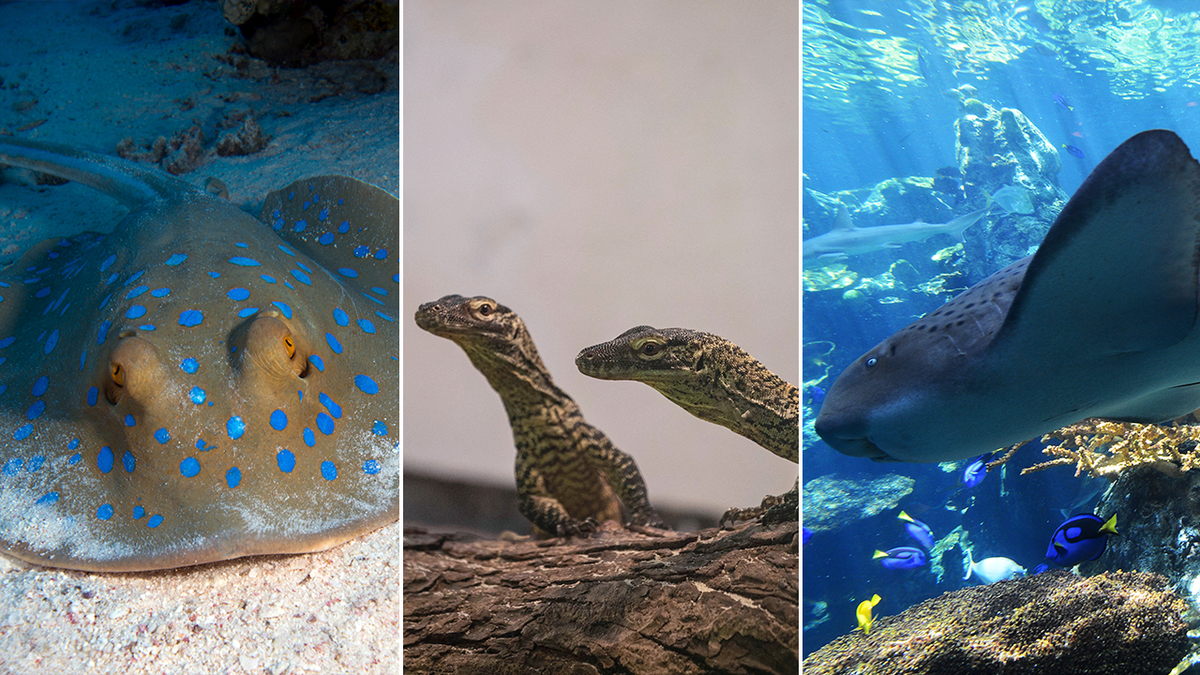North Carolina aquarium astonished after female stingray becomes pregnant, with no male stingrays nearby
Aquarium & Shark Lab by Team ECCO in Henderson, North Carolina has a pregnant stingray that lives in a tank with no males nearby. Experts believe it is reproducing asexually.
A stingray at Aquarium & Shark Lab by Team ECCO in Hendersonville, North Carolina, is pregnant without any mates in sight.
The female ray, named Charlotte, has become an aquatic enigma, as the public questions whether her pregnancy was caused by a male shark or by asexual reproduction.
A shark-ray pregnancy "is really not that strong of a possibility," the aquarium's founder and executive director, Brenda Ramer, told Fox News Digital.
It is more likely that Charlotte became pregnant through a form of asexual reproduction called parthenogenesis.
Fox News Digital also spoke to National Geographic senior editor Christine Dell'Amore, who noted that sexual reproduction normally involves an egg cell and a sperm cell.

Female stingray Charlotte, pictured, has appeared pleasant and healthy throughout her pregnancy, said the founder and executive director of the aquarium in Hendersonville, North Carolina. (Aquarium & Shark Lab by Team ECCO)
"Each provides half the genetic information necessary to create a living organism," she said. "But in parthenogenesis, the body finds a unique way of filling in for the genes usually provided by sperm."
WORLD'S LARGEST, RAREST OCEAN STINGRAYS SPOTTED AND TAGGED IN MOZAMBIQUE
The method involves the merging of an egg with "polar bodies," which are a cellular byproduct of meiosis, a type of cell division that creates sperm or egg cells.
This process "slightly shuffles the mother’s genes," according to NatGeo, to create offspring that are similar to the mother but not exact clones.

The stingray's ultrasound photo is shown here. Aquarium staff members have spoken to marine biologists across the world about the stingray's miracle pregnancy. (Aquarium & Shark Lab by Team ECCO)
Parthenogenesis, sometimes called "virgin birth," has been observed in at least 80 species, mostly fish and reptiles, Dell’Amore said.
Some species that can experience virgin birth include sharks, snakes and even birds — but never mammals.
Other animals that sometimes procreate through parthenogenesis include small invertebrates such as bees, wasps, ants and aphids, according to NatGeo.
Dell’Amore considers parthenogenesis to be "relatively rare."

Left to right, a blue-spotted ribbontail ray in the Red Sea, Egypt; juvenile Komodo dragons at the Surabaya Zoo, East Java province; and a zebra shark at the Aquarium of the Pacific in Long Beach, California. (Tahsin Ceylan/Anadolu via Getty Images; JUNI KRISWANTO/AFP via Getty Images; JOE KLAMAR/AFP/GettyImages)
"Scientists are often observing it in new species, many of which live in captivity," she said.
In some "very rare cases," species reproduce exclusively via parthenogenesis, Dell’Amore noted.
TEXAS ZOO WELCOMES THIRD GORILLA IN 115 YEARS AFTER DOCTORS PERFORM EMERGENCY DELIVERY
This includes the desert grassland whiptail lizard, which is an entirely female species.
It is rare that complex vertebrates such as sharks, snakes and lizards rely solely on asexual reproduction, NatGeo reported.

The desert-grassland whiptail (Aspidoscelis uniparens) is one reptile species that can reproduce asexually. (iStock)
One of the aquarium’s sharks has laid approximately 900 eggs in the past eight years, Ramer said — and 14 of those eggs have grown into embryos with no fertilization.
If Charlotte’s babies turn out to be the product of parthenogenesis, Dell’Amore projected they "should be fine," since they will likely live in captivity.
CLICK HERE TO SIGN UP FOR OUR LIFESTYLE NEWSLETTER
"If they were in the wild, it might be harder for them to breed because they'd be more vulnerable to disease than a genetically diverse population," she said.
Virgin births have occurred for millions of years in the "smallest, simplest organisms," according to National Geographic.

A baby stingray is housed in a permanent display at the Sea Life London Aquarium. (Ian West/PA Images via Getty Images)
"For more advanced animals like vertebrates, scientists think that the ability to reproduce asexually came about as a last-ditch effort for species facing adverse conditions," a NatGeo report said.
"That may explain why parthenogenesis is possible in so many desert and island species."
CLICK HERE TO GET THE FOX NEWS APP
More info on parthenogenesis can be found at nationalgeographic.com.
Fox News Digital’s Andrea Vacchiano contributed to this report.
For more Lifestyle articles, visit www.foxnews.com/lifestyle.


